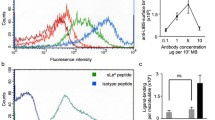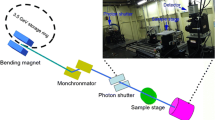Abstract
Many people have been affected by thrombotic events in several ways, all of which can give rise to the necrosis and death of tissues. Therefore, a sensitive way for detecting thrombus can enhance the efficiency of the diagnosis and the management of thrombosis. This study provided an originally activated platelet-targeted contrast agent for the detection of thrombosis. Utility Gd load apoferritin (Afn) nanocages, for MRI-enhancing contrast, were conjugated with a KGDS peptide, targeting integrin GPIIb-IIIa located on the membrane of human activated platelets. A transmission electron microscope (TEM) and dynamic light scattering (DLS) were used to examine the morphology of the prepared Gd-Afn-KGDS, which had the mean particle size about of 11.59 ± 0.37 nm with a narrow size distribution (the PDI was 0.21 ± 0.02). Hemolysis and cytotoxicity studies showed that the prepared Gd-Afn-KGDS had a great affinity for blood cells and vascular endothelial cells. Microscopy and in vitro MR imaging showed that the targeted nanoparticles bind to the blood clot and enhanced thrombus in the T1-weighted imaging, whereas in the control group, the non-targeted nanoparticles did not appear to have the same features. Thus, the evidence shows that the designed thrombus-specific, targeted T1-weighted contrast nanoparticles could potentially provide a benefit in the detection of thrombosis by MRI which could possibly be used in humans and might be useful for accurate thrombus therapy by entrapping thrombolytic drug inside the apoferritin nanocage.







Similar content being viewed by others
Data availability
The images and their analysis results data used to support the findings of this study are included within the article.
References
Aime S, Frullano L, Crich SG (2002) Compartmentalization of a gadolinium complex in the apoferritin cavity: a route to obtain high relaxivity contrast agents for magnetic resonance imaging. 41:1017–1019
Badrnya S, Schrottmaier WC, Kral JB, Yaiw K, Volf I, Schabbauer G, Söderberg-Nauclér C, Assinger A (2014) Platelets mediate oxidized low-density lipoprotein–induced monocyte extravasation and foam cell formation significance, vol 34, pp 571–580
Ciesienski KL, Caravan P (2011) Molecular MRI of thrombosis. 4:77–84
Daniel JL, Dangelmaier C, Jin J, Ashby B, Smith JB, Kunapuli SP (1998) Molecular basis for ADP-induced platelet activation I Evidence for three distinct ADP receptors on human platelets. J Biol Chem 273:2024–2029
De Groot AS, Scott DW (2007) Immunogenicity of protein therapeutics. 28:482–490
Dillard G, Brecher G, Cronkite EP (1951) Separation, concentration, and transfusion of platelets. Proc Soc Exp Biol Med 78:796–799
von Elverfeldt D, Maier A, Duerschmied D, Braig M, Witsch T, Wang X, Mauler M, Neudorfer I, Menza M, Idzko M (2014) Dual contrast molecular imaging allows noninvasive characterization of myocardial ischemia/reperfusion injury after coronary vessel occlusion in mice by MRI. Circulation 130(8):676–687 113
Falvo E, Tremante E, Fraioli R, Leonetti C, Zamparelli C, Boffi A, Morea V, Ceci P, Giacomini P (2013) Antibody-drug conjugates: targeting melanoma with cisplatin encapsulated in protein-cage nanoparticles based on human ferritin. Nanoscale 5:12278
Gawaz M, Langer H, May AE (2005) Platelets in inflammation and atherogenesis. J Clin Invest 115:3378–3384
Hansson GK (2005) Inflammation, atherosclerosis, and coronary artery disease. N Engl J Med 352:1685–1695
Harrison PM, Gregory DW (1968) Reassembly of apoferritin molecules from subunits. 220:578–580
He D, Marles-Wright J (2015) Ferritin family proteins and their use in bionanotechnology. 32:651–657
Jin Y, Zhang N, Li C, Pu K, Ding C, Zhu Y (2017) Nanosystem composed with MSNs, gadolinium, liposome and cytotoxic peptides for tumor theranostics. Colloids Surf B: Biointerfaces 151:240–248
Kilic MA, Ozlu E, Calis S (2012) A novel protein-based anticancer drug encapsulating nanosphere: apoferritin-doxorubicin complex. J Biomed Nanotechnol 8:508–514
Li J, Zheng L, Cai H, Sun W, Shen M, Zhang G, Shi X (2013) Polyethyleneimine-mediated synthesis of folic acid-targeted iron oxide nanoparticles for in vivo tumor MR imaging. Biomaterials 34:8382–8392
Lobatto ME, Fuster V, Fayad ZA, Mulder WJ (2011) Perspectives and opportunities for nanomedicine in the management of atherosclerosis. Nat Rev Drug Discov 10:835
Luo Y, Wang X, Du D, Lin Y (2015) Hyaluronic acid-conjugated apoferritin nanocages for lung cancer targeted drug delivery. Biomater Sci 3:1386–1394
Ma-Ham A, Wu H, Wang J, Kang X, Zhang Y, Lin Y (2011) Apoferritin-based nanomedicine platform for drug delivery: equilibrium binding study of daunomycin with DNA. J Mater Chem 21:8700–8708
Pandolfi L, Bellini M, Vanna R, Morasso C, Zago A, Carcano S, Avvakumova S, Bertolini JA, Rizzuto MA, Colombo M (2017) H-ferritin enriches the curcumin uptake and improves the therapeutic efficacy in triple negative breast cancer cells. Biomacromolecules 18:3318–3330
Psarros C, Lee R, Margaritis M, Antoniades C (2012) Nanomedicine for the prevention, treatment and imaging of atherosclerosis. Maturitas 73:52–60
Schiener M, Hossann M, Viola JR, Ortega-Gomez A, Weber C, Lauber K, Lindner LH, Soehnlein O (2014) Nanomedicine-based strategies for treatment of atherosclerosis. Trends Mol Med 20:271–281
Ta HT, Li Z, Hagemeyer CE, Cowin G, Zhang S, Palasubramaniam J, Alt K, Wang X, Peter K, Whittaker AK (2017) Molecular imaging of activated platelets via antibody-targeted ultra-small iron oxide nanoparticles displaying unique dual MRI contrast. Biomaterials 134:31–42
Tosi G, Belletti D, Pederzoli F, Ruozi B (2016) Apoferritin nanocage as drug reservoir: is it a reliable drug delivery system? Expert Opinion on Drug Delivery 13(10):1341–1343
Unger EC, McCreery TP, Sweitzer RH, Shen D, Wu G (1998) In vitro studies of a new thrombus-specific ultrasound contrast agent. Am J Cardiol 81:58G–61G
Weber C, Noels H (2011) Atherosclerosis: current pathogenesis and therapeutic options. Nat Med 17:1410
World Health Organization (n.d.) Cardiovascular diseases, http://www.who.int/mediacentre/factsheets/fs317/en/. Accessed 25 March 2019
Yao H, Su L, Zeng M, Cao L, Zhao W, Chen C, Du B, Zhou J (2016) Construction of magnetic-carbon-quantum-dots-probe-labeled apoferritin nanocages for bioimaging and targeted therapy. Int J Nanomedicine 11:4423–4438
Zhang J, Zu Y, Dhanasekara CS, Li J, Wu D, Fan Z, Wang S (2017) Detection and treatment of atherosclerosis using nanoparticles. Wiley Interdiscip Rev Nanomed Nanobiotechnol 9:e1412
Zhou X, Chen L, Wang A, Ma Y, Zhang H, Zhu Y (2015) Multifunctional fluorescent magnetic nanoparticles for lung cancer stem cells research. Colloids Surf B: Biointerfaces 134:431–439
Funding
This work was supported by the Science and Technology Program of Panyu (2017-Z04-06), the Science and Technology Program of Guangzhou (No. 201804010012), and the Science and Technology Project of Guangzhou Health Commission (No. 20191A010081).
Author information
Authors and Affiliations
Corresponding authors
Ethics declarations
Conflict of interest
The authors declare that they have no conflicts of interests.
Additional information
Publisher’s note
Springer Nature remains neutral with regard to jurisdictional claims in published maps and institutional affiliations.
Rights and permissions
About this article
Cite this article
Luo, W., Guo, H., Ye, Y. et al. Construction and in vitro studies of magnetic-apoferritin nanocages conjugated with KGDS peptide targeted at activated platelets for the MRI diagnosis of thrombus. J Nanopart Res 21, 177 (2019). https://doi.org/10.1007/s11051-019-4603-5
Received:
Accepted:
Published:
DOI: https://doi.org/10.1007/s11051-019-4603-5




